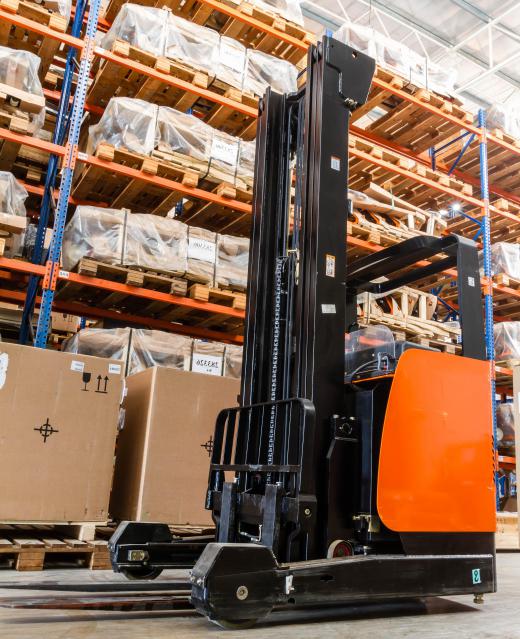A forklift radiator is an engine cooling device designed for use in a lift truck. Like other equipment that use an internal combustion engine as a source of power, a forklift can grow quite hot during operation. The radiator controls the engine temperature and keeps it within a safe operating range. Radiators may periodically need repair or replacement over the course of a forklift's years in service. It is possible to buy parts directly from the manufacturer or from a company that makes aftermarket parts.
Like a radiator in a car, the forklift radiator works by passing hot fluids through a series of tubes. The tubes zigzag through the device to create as much surface area as possible. Heat exchange can take place along the surface of the tubes and causes the liquid to cool as it moves through the radiator. When it exits, it is sufficiently cooled to return to the engine, where it collects heat and returns to the radiator to repeat this process all over again.

Lift trucks often run on diesel, and the demands on the engine can be considerable. While operators may not drive a forklift far, they ask it to lift a great deal of weight on the lifting arms. This can strain the engine and may cause it to run hot. The forklift radiator needs to be large enough to handle the volume of cooling fluid in the engine. It can become less efficient over time as a result of clogs or damage like blows to the tubes that bend or break them.
Forklift radiators can be a specialty product, and it is sometimes difficult to obtain spares. In an urban area or a region with a lot of manufacturing, suppliers may keep them in stock, and as long as a forklift is a common model, same-day replacement could be possible. For unusual models or remote places, it may take more than a day to get a replacement. A technician may be able to fit a new forklift radiator in the warehouse or factory for convenience, or it may be necessary to transport the equipment to a facility for repair.
Some companies keep spare parts in their shops so they don't experience interruptions in service and production. Spare part storage can be a solution if the company has room and it knows it will be able to use the parts before they become obsolete. One advantage of spare parts storage can be ready availability of unusual or hard to find parts; if a company has had trouble replacing a forklift radiator in the past, it may want to order a spare to minimize delays in the future.
Ever since she began contributing to the site several years ago, Mary has embraced the exciting challenge of being a About Mechanics researcher and writer. Mary has a liberal arts degree from Goddard College and spends her free time reading, cooking, and exploring the great outdoors.

